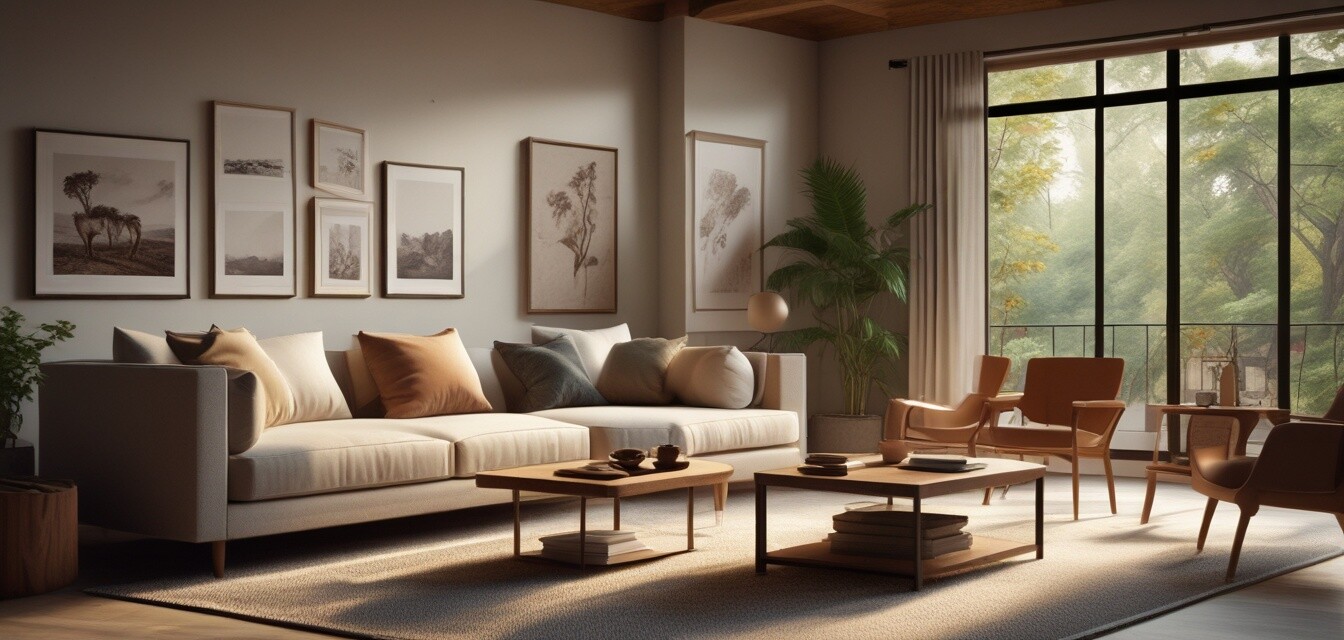
Creating a relaxing space with eco-friendly furniture
Key Takeaways
- Opt for sustainable materials that reduce environmental impact.
- Incorporate calming designs and colors to enhance relaxation.
- Choose versatile furniture pieces that fit various spaces.
- Prioritize functionality while maintaining an eco-friendly ethos.
- Maintain your furniture to prolong its lifespan and reduce waste.
Creating a relaxing space at home can be achieved through carefully selected eco-friendly furniture. This article explores how sustainable choices, particularly in TV stands, can transform your living space into a calm and inviting haven. From choosing the right materials to incorporating designs that promote tranquility, let’s dive into the essentials of making your home a sanctuary.
Why choose eco-friendly furniture?
Eco-friendly furniture not only supports sustainable practices, but it also contributes to a healthier living environment. Here are a few key reasons to consider:
- Reduced carbon footprint through sustainable sourcing.
- Better indoor air quality with non-toxic finishes and materials.
- Longevity and durability, providing value over time.
- Support for ethical manufacturing practices.
Materials to consider for your space
| Material | Benefits | Considerations |
|---|---|---|
| Bamboo | Fast-growing, strong, and durable. | Avoid low-quality imports; look for sustainable brands. |
| Reclaimed wood | Unique character and less waste. | May require more maintenance; check for finishes. |
| Metal | Recyclable and highly durable. | Check for sustainable sourcing and finishes. |
| Natural fibers | Biodegradable and breathable. | Ensure non-toxic dye and treatment methods. |
Calming designs and colors
The design and color palette of your furniture plays a significant role in the overall feel of your space. Here are some suggestions:
- Soft earth tones: Greens, browns, and neutral shades foster a peaceful atmosphere.
- Minimalist designs: Less clutter leads to a more serene environment.
- Curved shapes: These promote flow and comfort enhancing relaxation.
- Textured fabrics: Use natural materials like cotton and wool for a cozy feel.
Functional furniture choices
When choosing furniture for your relaxing space, functionality should go hand in hand with sustainability. Some versatile pieces to consider include:
- Modular TV stands that adapt to your needs.
- Floating shelves to maximize floor space and maintain a clean aesthetic.
- Storage solutions that keep your belongings organized while minimizing clutter.
Recommended TV stand types for relaxation
TV stands come in various styles that support a tranquil environment. Here are some eco-friendly options:
- Wooden TV stands: Naturally aesthetic and sturdy.
- Floating TV stands: Save space and promote a clean look.
- Modular TV stands: Customizable for your unique space.
Tips for maintaining your eco-friendly furniture
Beginners Section
- Regularly dust and clean with non-toxic products.
- Avoid placing furniture in direct sunlight to prevent fading.
- Use coasters and mats to protect surfaces from scratches.
- Check for loose screws or fittings to maintain stability.
- Consider repairs over replacements to reduce waste.
Conclusion: Your path to a serene eco-friendly space
Designing a relaxing space using eco-friendly furniture doesn’t have to be overwhelming. By selecting sustainable materials, calming designs, and functional pieces, you can create an inviting environment that reflects your values. Remember to maintain your furniture to ensure it lasts, further reducing your carbon footprint. For more tips on sustainable living, check out our Eco-Friendly Living blog category.
Pros
- Enhances overall well-being by creating a calming environment.
- Supports sustainable practices and eco-friendly manufacturing.
- Unique designs that can serve as conversation starters.
- Potential for cost savings through durable, quality pieces.
Cons
- Sometimes higher upfront costs compared to conventional options.
- Requires more knowledge to select truly sustainable products.
- Limited availability in some regions.
- Maintenance requirements may differ based on materials.